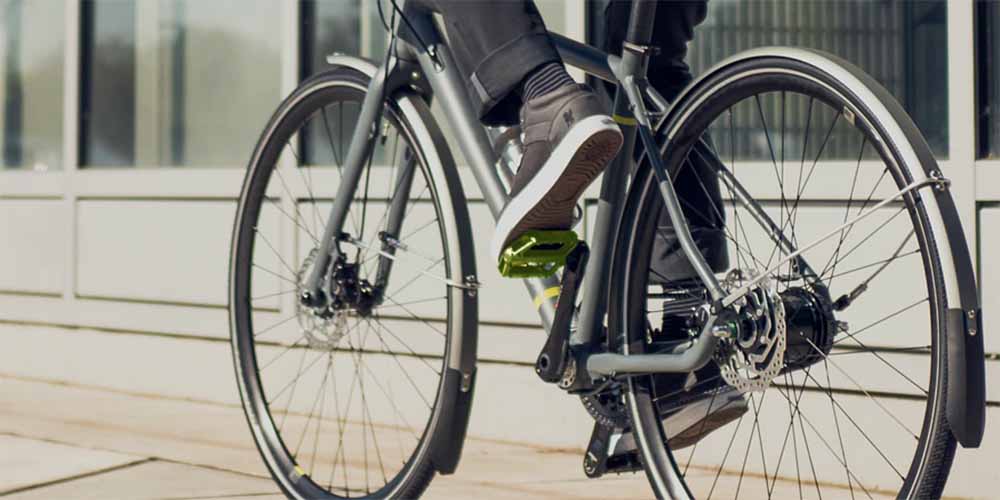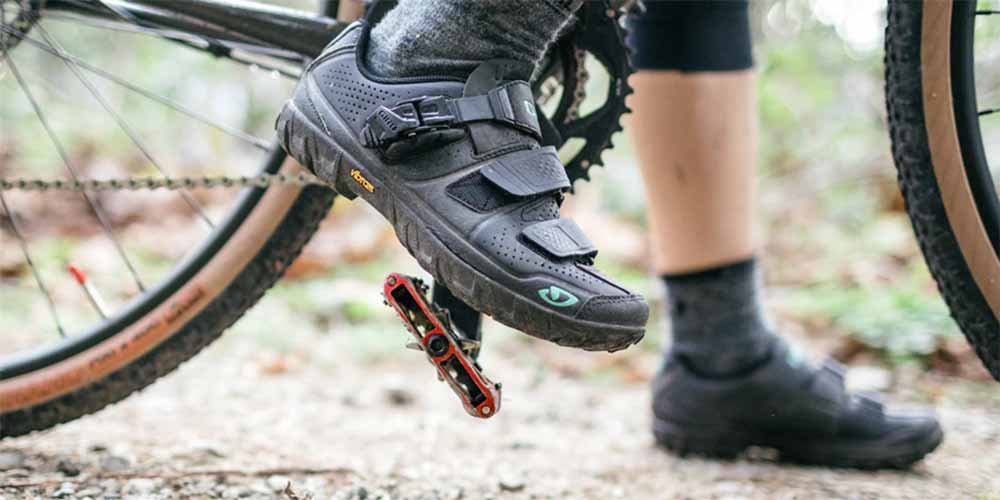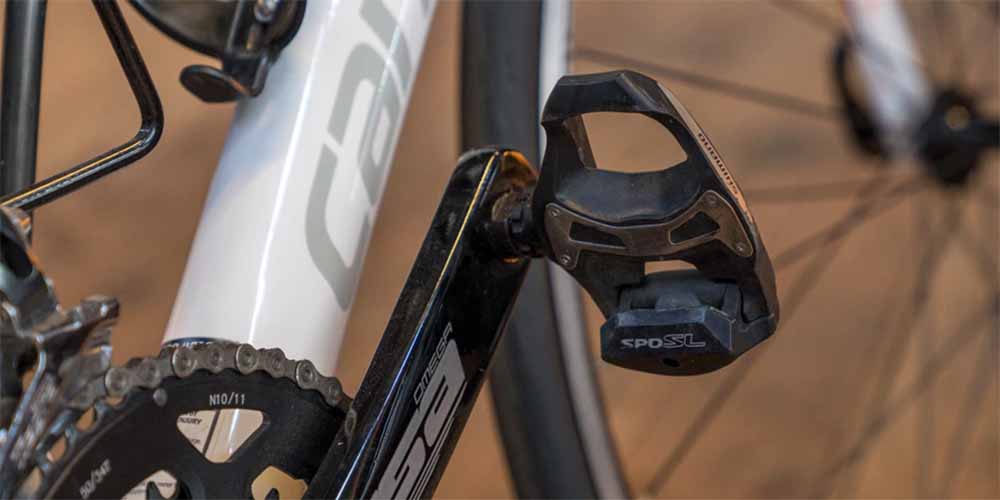How to choose bicycle pedals

When choosing bicycle pedals, the first thing to consider is the type of riding you will be doing. Will you ride a road bike or a mountain bike? Are you looking for the pedaling power and efficiency of clipless pedals (the cleats in the sole keep your foot in place) or the ease and maneuverability of flat pedals? Maybe you want the benefits of both.
If you decide to use clipless pedals, make sure your pedals, cleats, and shoes work as a system. You can buy shoes or pedals first, as long as you keep the pedal compatibility in mind when deciding. The cleats can be sold with the pedals or separately.
In this article, we’ll walk you through the main considerations when choosing bicycle pedals:
Decide if you want clipless or flat bike pedals: If you want more efficiency and control, go for clipless pedals; attach your shoes to the pedals and when you push up and down, you Power can be transmitted. Choose flat pedals if you need to get your foot off the pedals quickly, or if you want comfort when walking in shoes without cleats.
Consider your riding type: Do you want road bike pedals with three-hole cleats for maximum power transfer? Or are you a recreational cyclist looking for flat pedals that are easy to get on and off?
Decide which shoes you want: Sometimes, your shoe preferences may dictate the type of pedals you get. If you’re a commuter on a bike and want to wear shoes on your bike, flat pedals or mountain bike pedals are a good choice, as you can wear shoes with concave cleats or regular street shoes.
Close-up on the pedals of a clipless bicycle
What are clipless pedals? “Clipless” is certainly a confusing name because you actually “clip into” the pedal’s cleats, just like you would with a ski binding. (They were named clipless decades ago to distinguish them from another type of pedal called “toe clips” at the time). Clipless pedals work by attaching a small plastic or metal cleat to the sole, which usually snaps into a set of spring-loaded “clips” on the surface of the pedal. Clipless pedals have cleats in a 3-hole or 2-hole design.
Why choose clipless pedals? Clipless pedals provide a high level of control when riding fast or performing actions like jumping to the curb or on a log. Your foot doesn’t bounce off the pedals when you apply power or ride over bumps. Getting in and out of clipless pedals can take some practice, but once you get the hang of it, they feel like second nature.
What are platform (flat) pedals? These “flat pedals” are probably the ones you used on your first bike. They provide a stable, wider surface to support your feet and can be used with almost any shoe. They are not suitable for clipless shoes.
Why choose flat pedals? Many downhill mountain bikers prefer this type of pedal, paired with a specially designed shoe with a grippy sole or tread. This combination provides plenty of grip and control while being the easiest to get out of in the event of a crash. Platform pedals also give you the confidence to help avoid a crash.
Recreational cyclists, commuters or riders who get on and off their bikes a lot may want flat pedals so they can wear shoes that are more comfortable and easier to walk on.

Consider the type of ride you ride
Benefits of road bike pedals: Most road cyclists prefer clipless pedals because the strong connection between the shoe and the pedal translates into great power and efficiency on every stroke.
road bike pedals
Typically cleats with a 3-hole design. This is often referred to as the “look” type cleat (after the company that pioneered it) or the SPD-SL system. Compared to similar 2-hole designs, these cleats are larger, made of plastic, and protrude farther from the sole.
The advantage of the three-hole design is that the larger cleats spread the force exerted on the pedals over a wider area. This reduces stress on the connection point and allows for a secure connection during the high stress loads of riding a road bike.
Benefits of mountain bike pedals:
Clipless pedals for mountain bikes
Cleats with 2-hole design, embedded in the sole, make walking more comfortable. Screws go through two holes to secure the cleats to two tracks or slots on the bottom of a compatible shoe. This allows you to slide the cleats back and forth slightly to achieve the proper angle and position for maximum comfort and easy engagement with the pedals.
If a mountain biker wants more pedaling efficiency or better control of their bike, more power on climbs, or if they don’t want to worry about their feet slipping off the pedals, they might opt for clipless pedals. Riders who want the freedom to take their feet off the pedals, aren’t used to clipless pedals, or are just learning may also prefer the ease of use of platform pedals.
Choose pedals for your recreational bike: If you’re a more casual rider, you can opt for flat pedals or a 2-hole cleat system as it’s easier to walk around and get on and off the bike in these compatible shoes.
Choose pedals for your bike commute: If you commute long distances to work, you may want the pedaling efficiency of clipless pedals. However, if you need more comfortable shoes or shoes that can be worn anywhere, consider flat pedals that are compatible with any shoe.
Or consider hybrid bike pedals: Hybrid pedals offer the flexibility of a platform pedal on the one hand and the efficiency of a clipless system on the other. It’s an excellent transition pedal for anyone looking to get into clipless easily. While most people considering clipless pedals will “go all out” or not use them at all, these provide an alternative for those who don’t always ride in cycling shoes.

Pedal Float: When you pedal on a bike with cleats, the cleats lock into the pedal mechanism and stay firmly in place. Float is the amount of angular rotation of the foot on the pedal. Different types of cleats allow for different degrees of float; you can change the cleat to change the float. Some systems hold the foot at a fixed angle; others allow a fixed amount of float and some allow a customizable range of float. This becomes largely a personal preference as you become a more experienced rider.
Multi-release cleats: Most cleats with pedals are released laterally. The so-called multiple-release cleat is very similar to these models, except that it is easier to release and has a slightly increased angle (your heel can move out or in and slightly up). The difference is subtle. On top of that, they do seem to be more forgiving than lateral release cleats. Multi-release cleats are usually sold separately from the pedals.
How to Use Clipless Bike Pedals
Learning how to use clipless pedals can be intimidating. Many cyclists have tipped over their bikes at some point. Stick to it. This move is easy to learn, but requires practice to develop muscle memory and confidence. When learning how to use clipless pedals, find a flat piece of grass to practice. You may fall once or twice while studying, and soft ground helps prevent injury. Alternatively, you can practice cutting in/out on a bike trainer (or in an indoor cycling class) or by having a friend hold your handlebars.
How to clip into clipless bike pedals:
When you start to pinch, use the front brake to keep your bike from rolling forward.
Clip in the first shoe and start rolling forward. Once you get some balance and start moving, clip in the second pedal.
In general, it’s easier to clip in on flat surfaces or when going slightly downhill. Trying to clip in when starting uphill can be difficult.
How to release from clipless bike pedals:
When you roll toward a stop (such as an intersection), consider “be careful” and be prepared ahead of time. You need to cut it off before it comes to a complete stop. If you only stop briefly, you only need to release one pedal.
If you’re riding a road bike or commuting, you’ll usually loose your dominant foot. For mountain biking, it’s good to know how to do both.
Twist your ankle/heel outward away from the bike. You will hear a click and your foot will release from the pedal. Once your shoes are off the system, put your feet down.
Tip: Build proper muscle memory by going in and out of each pedal 50 to 60 times. With that many reps, your legs will start to be trained to do the right thing without you having to think about it. You can also practice on an indoor spin bike.
How to Care for Clipless Pedals
If it is difficult to engage or disengage the cleats, the pedals may need cleaning and lubrication. Here’s how to clean clipless pedals:
Start by looking for obvious signs of damage.
If you can’t find it, give the pedals a good scrubbing with warm water to remove any mud or debris.
Let the pedals dry and add a drop of light lube to the clips on the pedals. If you have a double-sided system, remember to lubricate both sides.
If you are still having problems, please consult your local REI bike mechanic.
Tip: If you don’t have a cleaning brush kit, an old toothbrush is a great tool for cleaning your pedals.
If you are looking for a new way of commuting or want a healthier lifestyle, we are here to help you. Visit our website to learn more about electric bikes and electric scooter or please leave information to us.
 Shuangye ebike
Shuangye ebike
